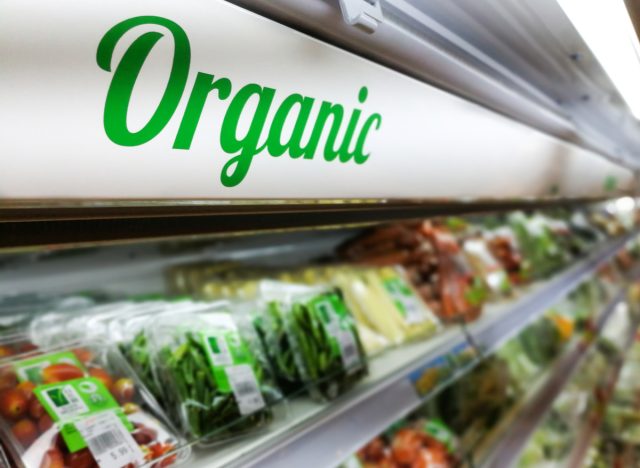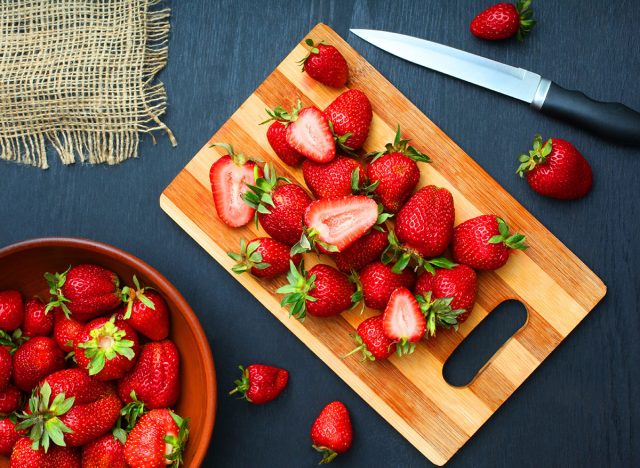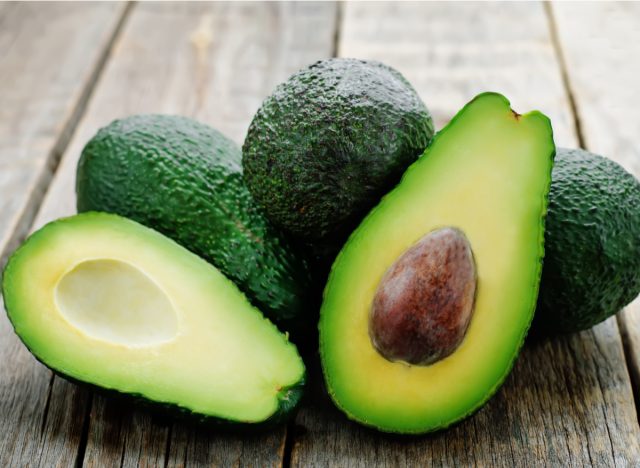It's always a great idea to incorporate fresh fruits and vegetables into your diet—but what if you are exposing yourself to harmful pesticides in the process?
That's just what new research from the non-profit group Environmental Working Group (EWG) showed: more than 70% of non-organic fresh produce sold in the U.S. contains residues of pesticides. And according to EWG, some fruits and vegetables are more pesticide-ridden than others—so much so that the group publishes a list of produce that contains the highest concentration of pesticides every year.
The Dirty Dozen, as the group calls it, are the fruits and veggies that are most contaminated with these chemicals. On the flip side, the group also named the produce with the lowest levels of contamination on its Clean Fifteen list.
Since 2004, EWG has used the U.S. Department of Agriculture (USDA) test data to rank 46 foods. The research is based on the latest data collected from almost 45,000 samples of produce tested by the USDA and the U.S. Food and Drug Administration (FDA). To mimic real-life conditions, the USDA washes the produce as consumers would before testing each non-organic food item.

To give you a glimpse into just how much pesticides are found on produce right now, we spoke with EWG healthy living science analyst Sydney Swanson. The rigorous testing, she says, reveals that nearly all samples of some produce contain two or more pesticides.
"Testing data showed that more than 90% of strawberries, spinach, nectarines, apples, grapes, and cherries tested positive for two or more pesticides," Swanson says. "However, almost 70% of the produce on our clean 15 list had no pesticide residues detected."
According to Lauren Manaker, MS RDN, and member of the Eat This, Not That! medical review board, it's not likely that eating produce that contains pesticides will cause any adverse health effects due to the small amount in which they are present.
"The risks associated with not eating enough produce far outweigh any concern associated with eating produce on the dirty dozen list," Manaker tells Eat This, Not That! "Plus, none of us are eating the amount of produce that would have a significant effect on our health—for example, a woman would need to eat over 400 strawberries every single day to reach the levels of pesticide residue associated with potential risks."
When asked if the benefits of eating vegetables "contaminated" with pesticides outweigh the risks, Manaker said that contrary to popular belief, it's not just conventional produce that contains pesticides.
"It is important for people to remember that the word 'organic' does not mean that a food is pesticide-free," Manaker adds. "Conventionally-grown produce may have synthetic pesticide, herbicide, and fungicide residue, and produce grown using organic farming practices may have organic pesticide/herbicide residues."
"Several harmful pesticides that have been banned or restricted in other countries are still approved for use in the United States," Swanson says. "It is important that everyone eats lots of fruits and vegetables, whether conventional or organic. While the pesticide residues detected on the tested produce were within legal limits and met the government's regulations, legal does not mean safe."
Swanson adds that it's best to choose organic whenever you can, but if you can't, refer to the two lists EWG created to use as a shopping guide.
"Consumers hoping to limit their pesticide exposure may choose conventional versions of the produce on the Clean Fifteen list and purchase organic versions of the produce on the Dirty Dozen list when possible," Swanson says. "It is important that shoppers eat enough fruits and vegetables, and by utilizing these helpful guides, they can ensure they are consuming enough produce while also reducing their pesticide load."
So how do you best protect yourself from ingesting pesticides unknowingly? The first step is washing your produce properly before eating it. Don't use soap, detergent, or produce wash. Water is the best choice.
"People should be washing their produce well—not simply running it lightly under some water sprinkles," Manaker suggests. "Rubbing the produce while rinsing and ensuring they are thoroughly cleaned is recommended."
The "Dirty Dozen"

It's not just fruit that made the list.
A single sample of kale, collard, and mustard greens had up to 21 different pesticides. The pesticide most frequently detected on collards, mustard greens, and kale is DCPA—sold under the brand name Dacthal—which is classified by the EPA as a possible human carcinogen and was banned by the EU in 2009. On average, spinach samples had 1.8 times as much pesticide residue by weight as any other crop tested.
- Strawberries
- Spinach
- Kale, mustard, and collard greens
- Nectarines
- Apples
- Grapes
- Bell & hot peppers
- Cherries
- Peaches
- Pears
- Celery
- Tomatoes
The "Clean 15"

If you're a fan of avocados, there's good news for you: they're ranked one of the cleanest produce items there is at the supermarket. Pineapple, melon, kiwi, cantaloupe, mangoes, and watermelon are some other popular fruits that are safe to buy non-organic.
Also on the clean list are sweet corn, onions, mushrooms, and sweet potatoes. In all, less than 2% of samples of avocados and sweet corn showed any detectable pesticides. And just under 5% of these produce samples had residues of two or more pesticides.
- Avocados
- Sweet corn
- Pineapple
- Onions
- Papaya
- Sweet peas (frozen)
- Asparagus
- Honeydew melon
- Kiwi
- Cabbage
- Mushrooms
- Cantaloupe
- Mangoes
- Watermelon
No comments:
Post a Comment